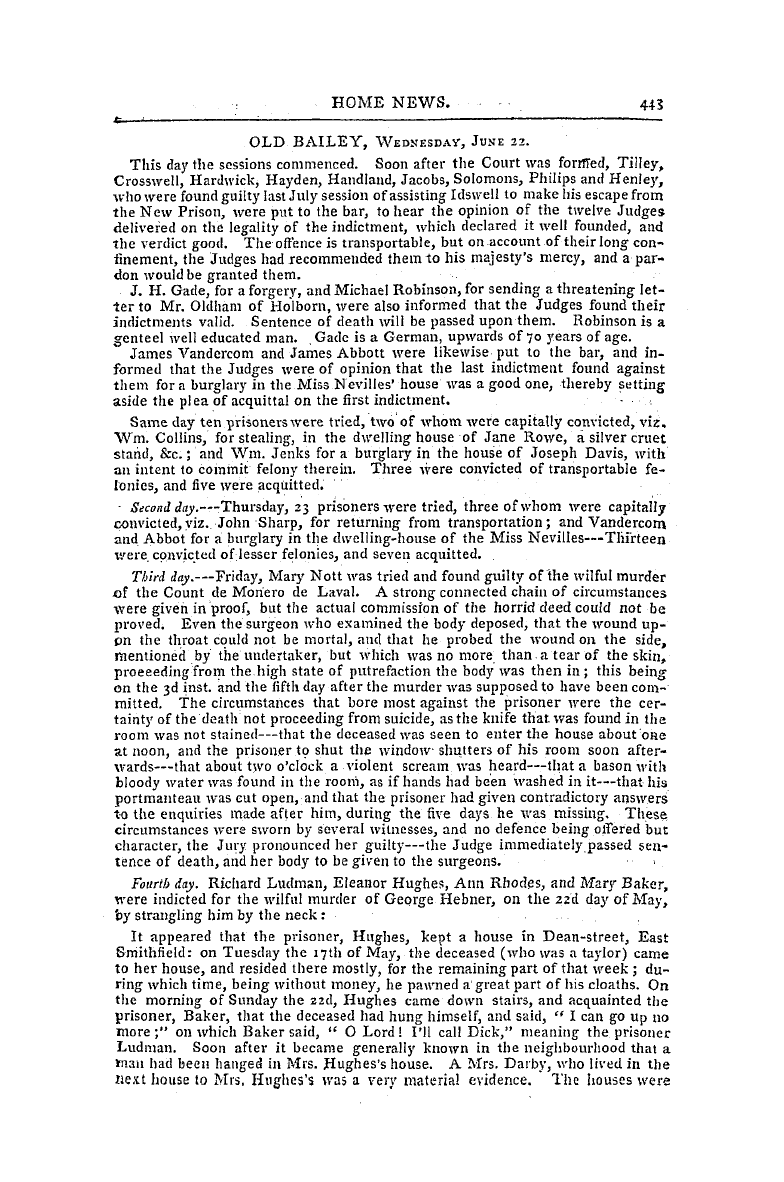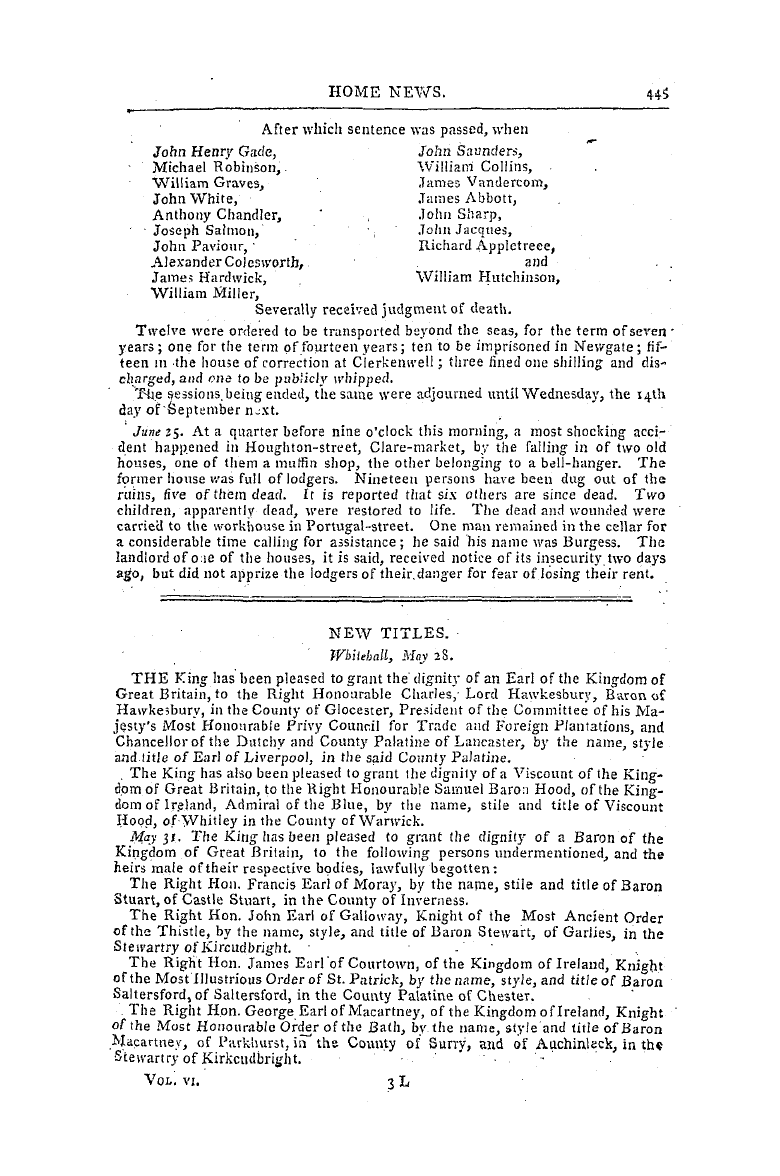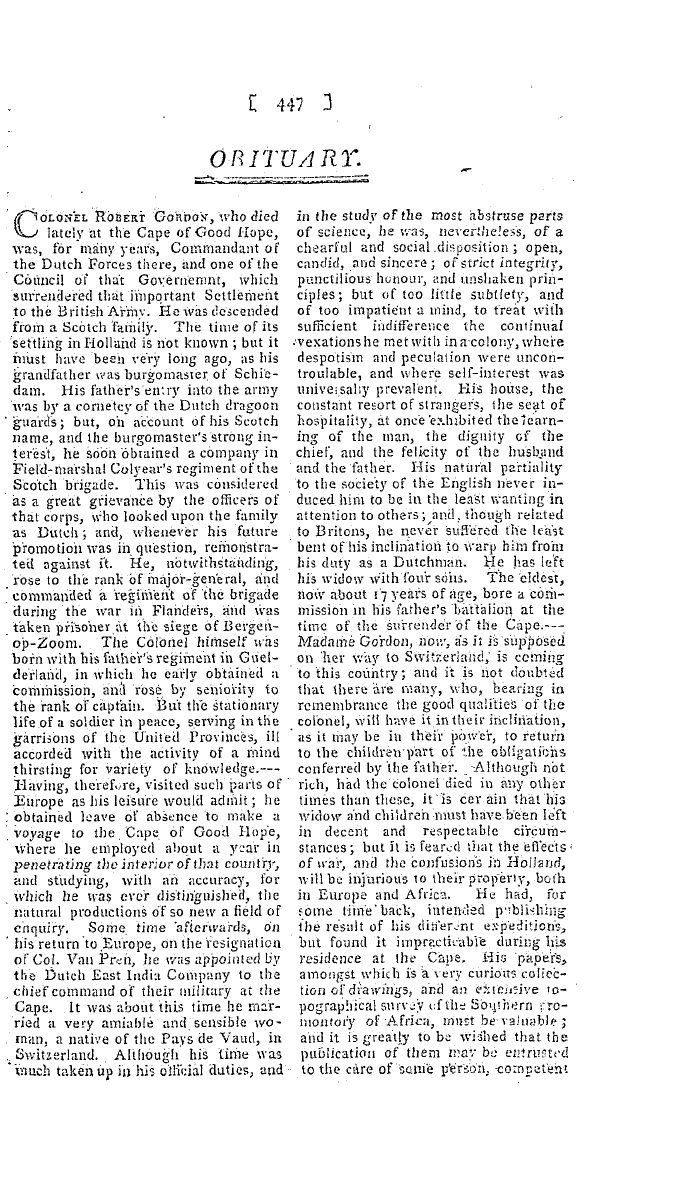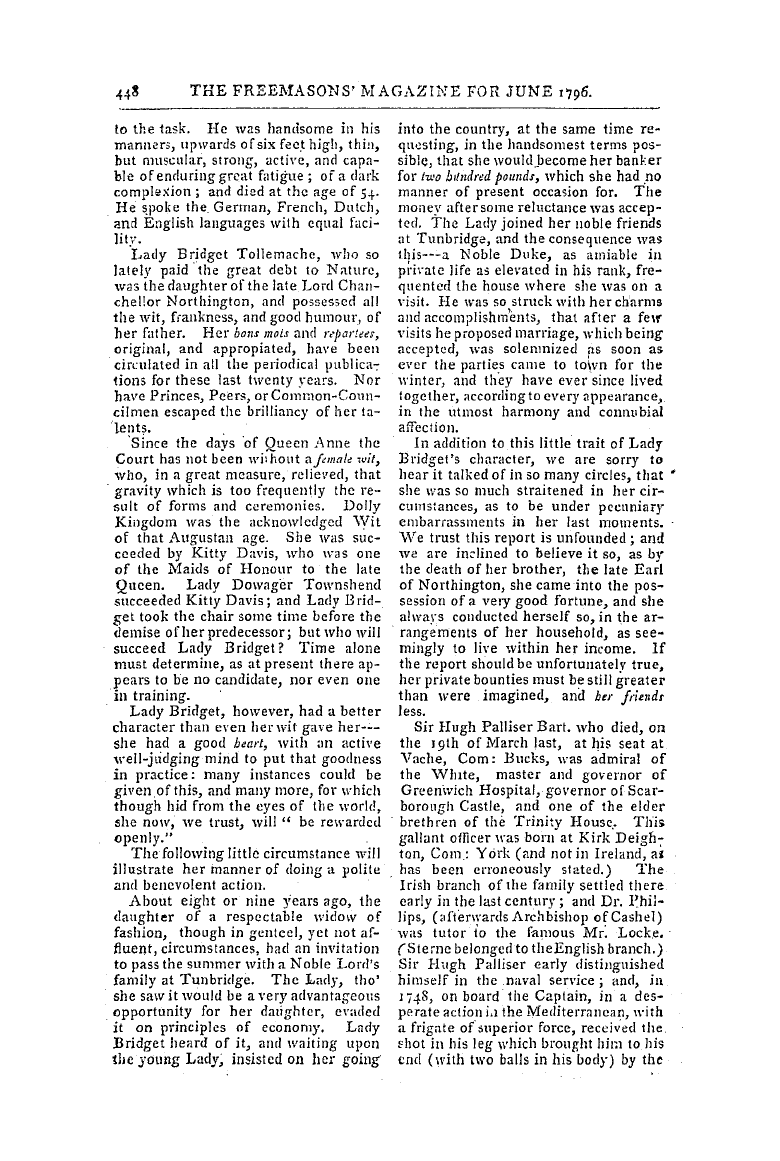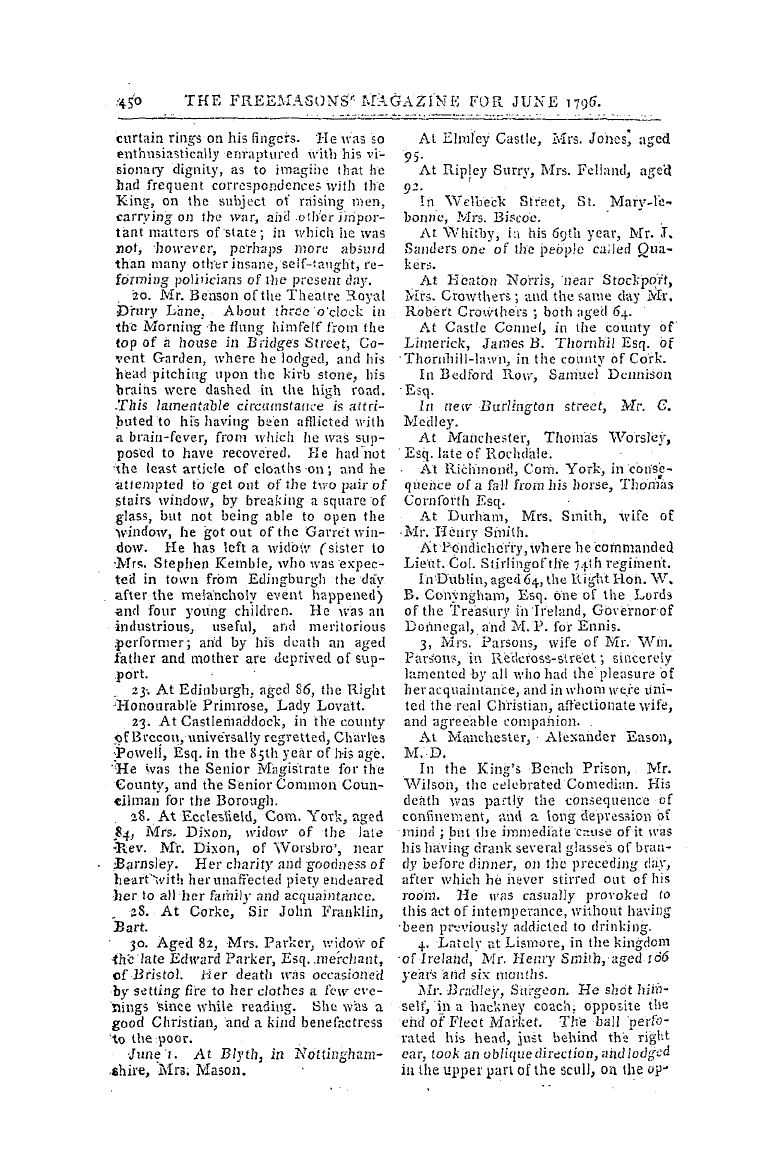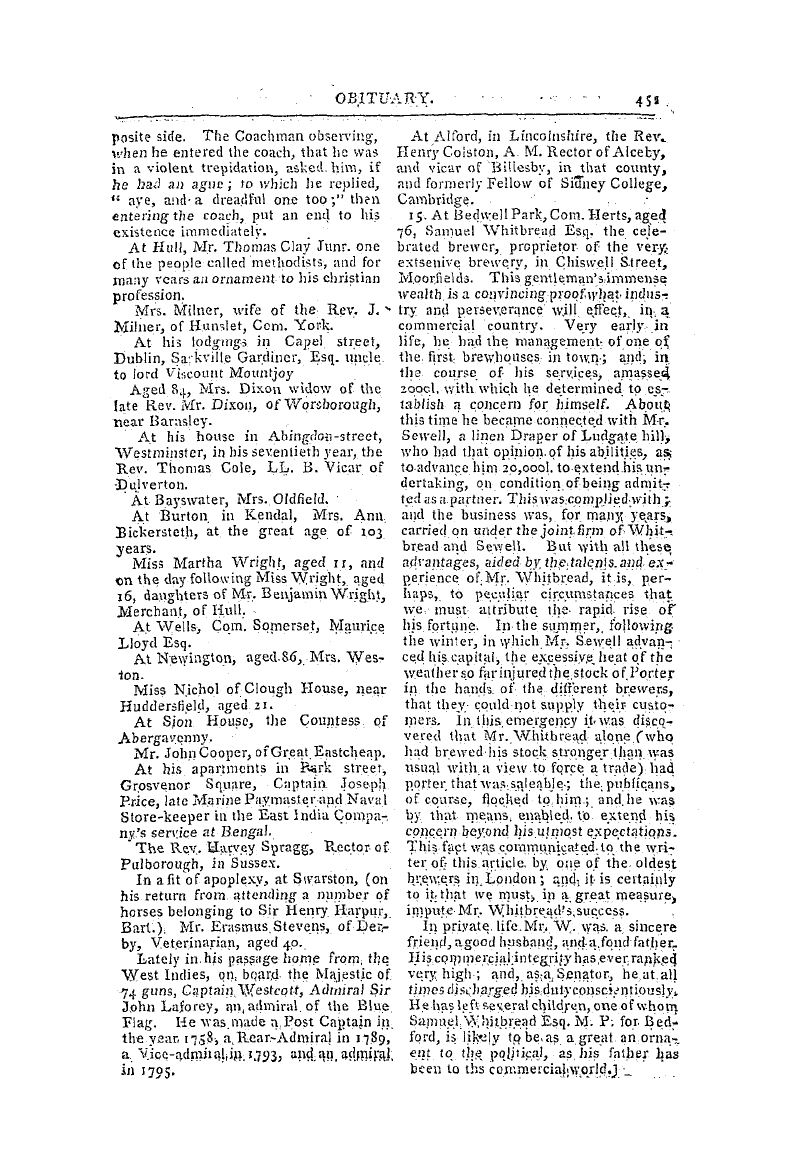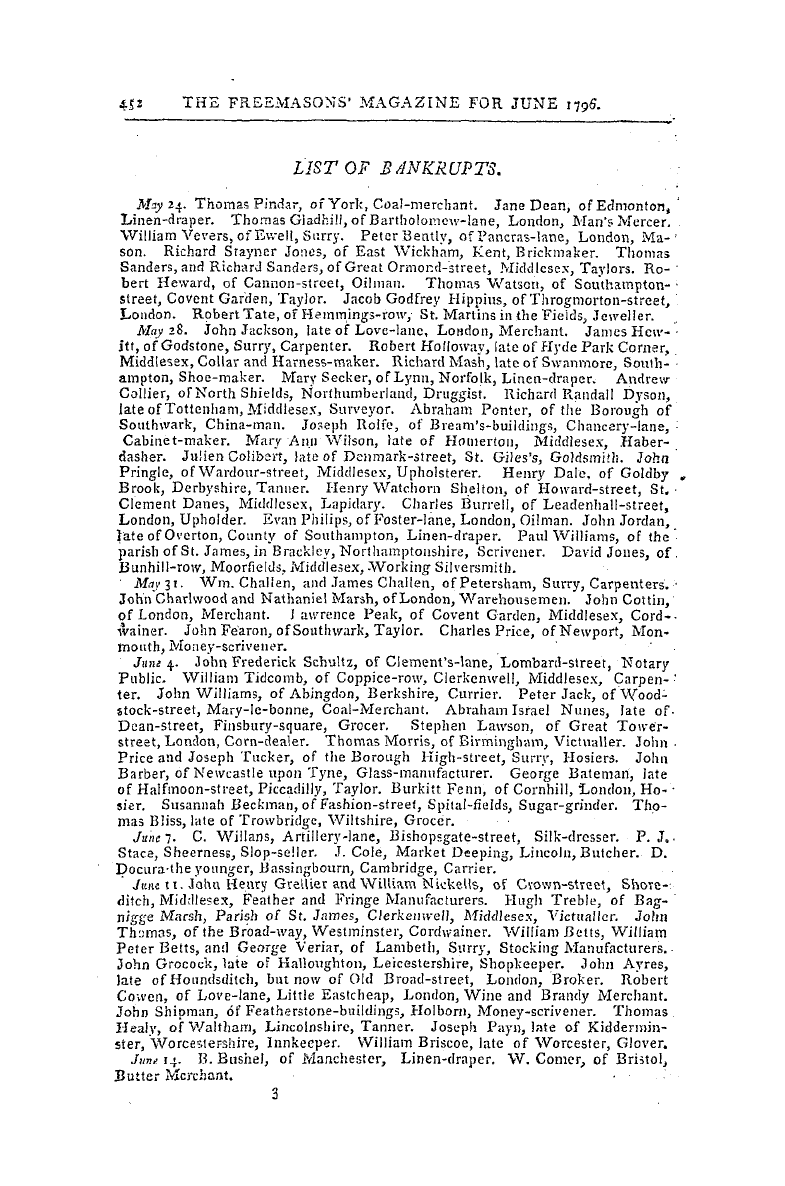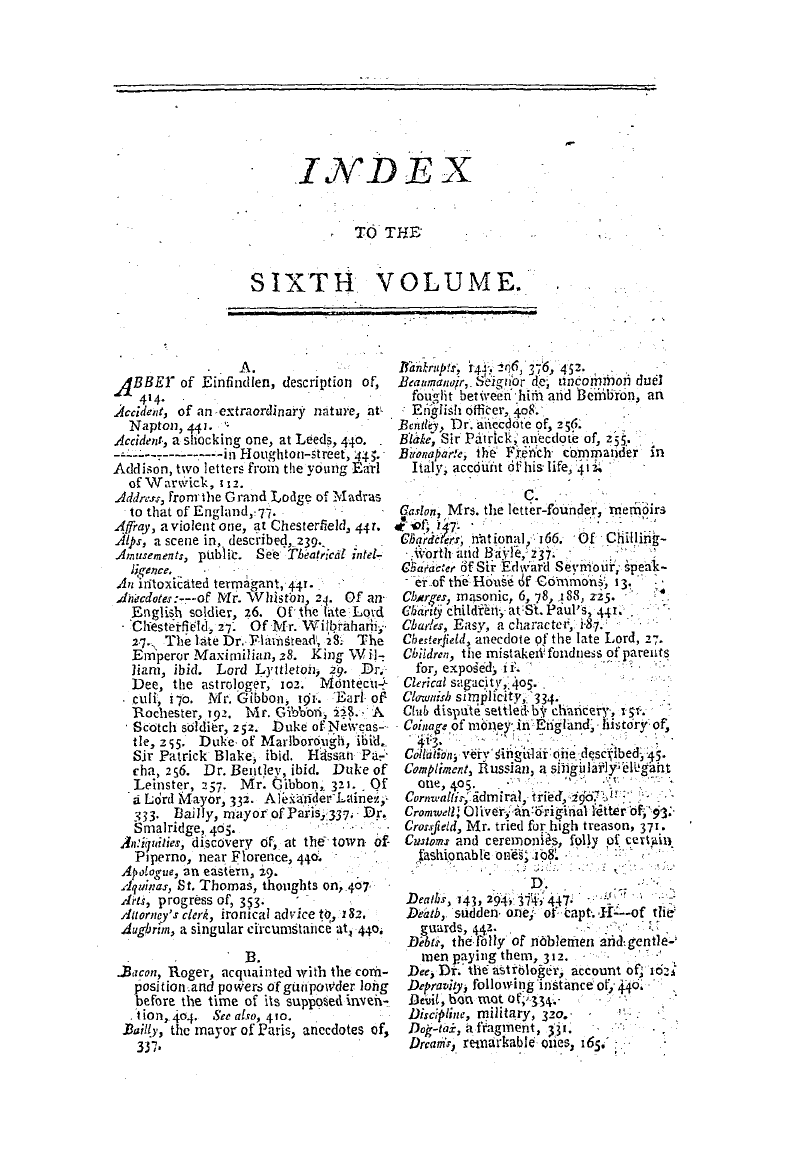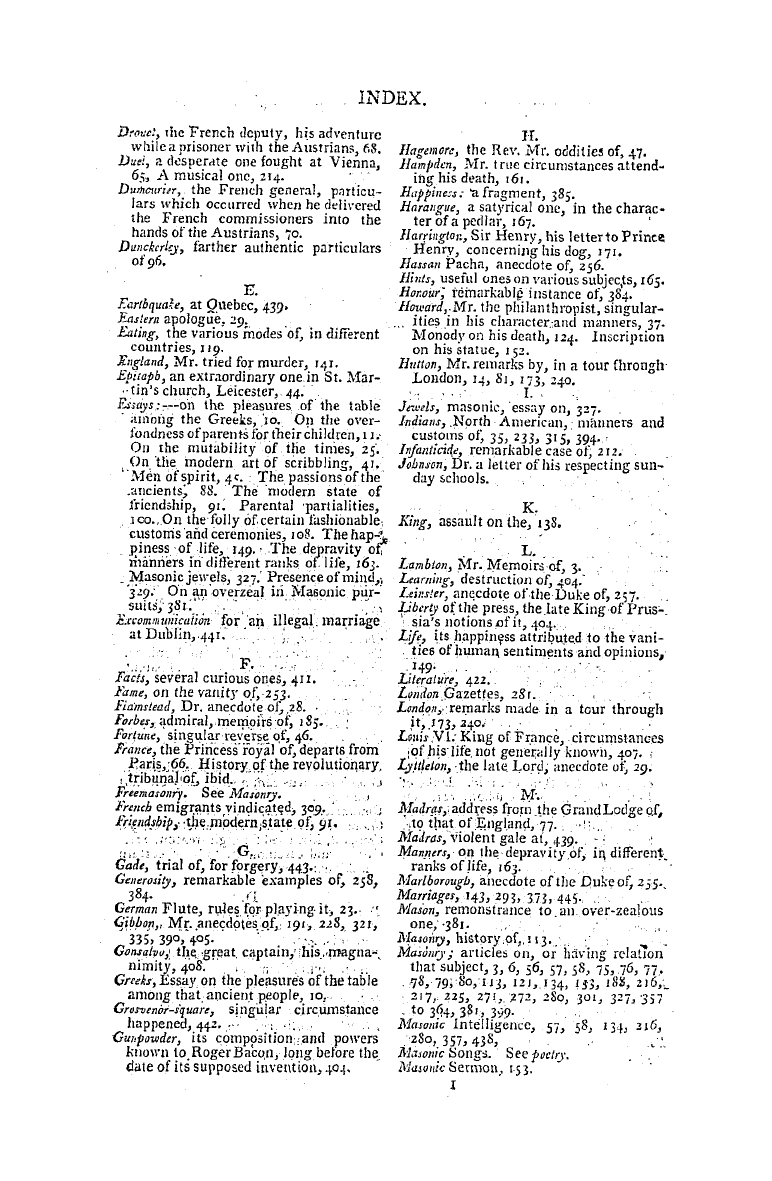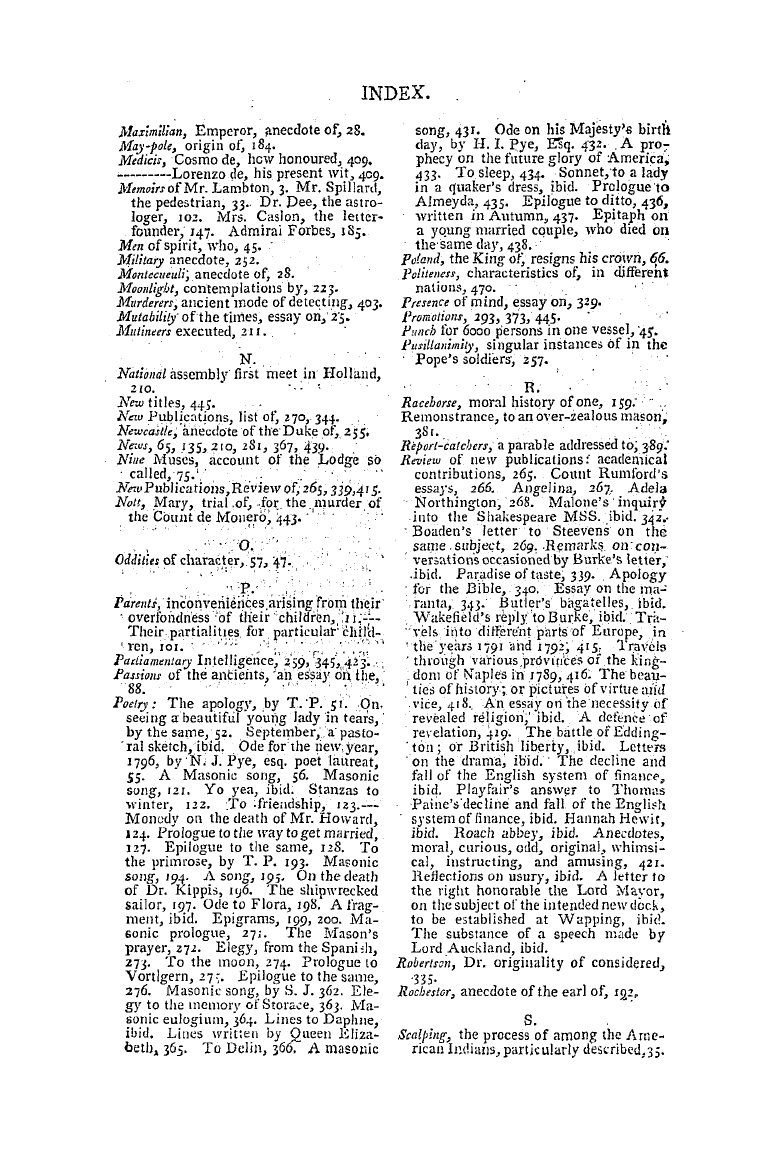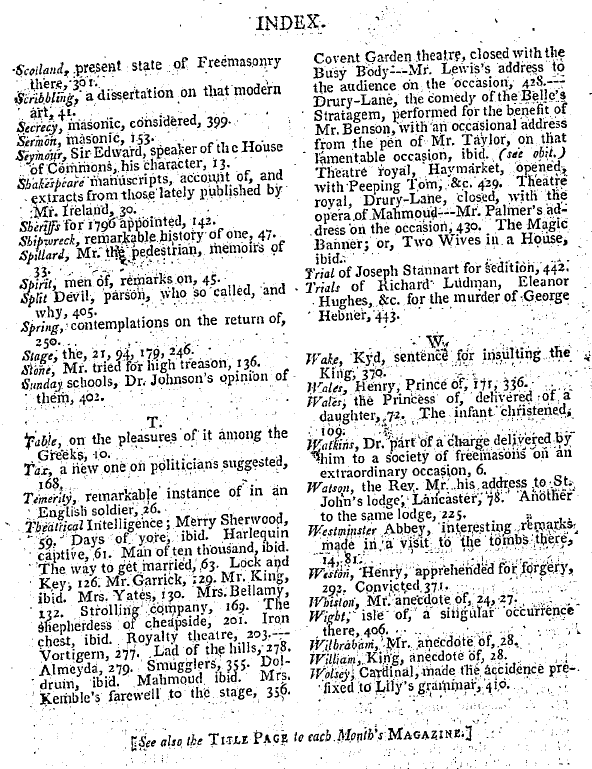Note: This text has been automatically extracted via Optical Character Recognition (OCR) software.
History Of The Coinage Of Money In England;
HISTORY OF THE COINAGE OF MONEY IN ENGLAND ;
AND OF ITS VALUE AT DIFFERENT PERIODS .
HPHE first sort of Gold Coin in England was called an Angel , taking ¦*¦ its name from an angel imprest on one side of the piece , and . their value was in the first of Henry VI . 6 s . 8 d . ; in the first of Henry VIII . 7 s . 6 d . ; in the 34 th of his reign , 7 s . ; and in the 6 th of Edward VI . 10 s . Florens were so called , because made by the Florentines ; and in the 18 th of Edward III . they went for 3 s . 6 d . Anciently our lish coin called the
Eng Penny had a cross on it , by which means the piece was broken asunder ; so if it was broke in half , it was called a Half-penny ; and the fourth part broke off was called a Fourthlino- ; from whence comes the word Farthing . ' But the next piece of gold among us in use was the Noble ; which was called by that name , by reason of its being made of the noblest and purest gold , and its value in different rei
gns was from 6 s . 8 d . to 15 s . There were likewise in use among us George-Nobles , and Double-Nobles ; but their value and fineness , in different times , being not certainl y known , we shall proceed to the next coins in course , which are the Rials or Royals , which in the first of Iienry VI . went for 10 s . hut in the first of Heny VIII . for 1 is . 3 d . There were likewise Rose-Rials and
Spur-Rials ; and about the year 1427 , we had in use among us a French com of gold , called a Scute , in value about 3 s . 4 d . Another of our coins was the Sovereigns , which went in the first of Henry VIII . at il . 2 S . 6 d . Unites in the 10 th of James I . went at il . ns . By a proclamation issued out in
the 9 th year of the last named king , gold was raised 2 s . a pound ; but Charles I . brought it again to the standard of the first year of his father : and b y the way we must note , that a pound of gold , troy weight , was divided into 24 carats , and each carat into 4 grains ; and that the old standard of England was 23 carats , three grains and a half of fine gold , and half a grain of alloy , wrhich might be either silver
or copper . . In Silver Coin , a Pound , Libra , contains 12 ounces ; and , thouo-h now u signifies 20 shillings , when applied to money , which is but the third part of a pound in wei ght , yet . it is called a pound still , because tormerl y 20 s . did weigh a full pound , or 12 ounces , Each of these ounces contained so many Solids or Shillings , and so many Denarii or Pence who the
, as they governed money matters thought fitsometimes more , and sometimes fewer . King Edgar made a law ! that there should be the same money , the same weight , and the same measure , throughout the kingdom ; but it does not appear , that this was eyer well observed : The next denomination of money we meet with ,-. is a Mark , called Mancus or Mancusa , and Mearc by the Sax-.ons ; ; amongst whom it came to 30 pence , which of their money was 0 stuihngs ; but in the year 1194 , a Mark was 13 s . d . and so it VOL . vi 3 Q
Note: This text has been automatically extracted via Optical Character Recognition (OCR) software.
History Of The Coinage Of Money In England;
HISTORY OF THE COINAGE OF MONEY IN ENGLAND ;
AND OF ITS VALUE AT DIFFERENT PERIODS .
HPHE first sort of Gold Coin in England was called an Angel , taking ¦*¦ its name from an angel imprest on one side of the piece , and . their value was in the first of Henry VI . 6 s . 8 d . ; in the first of Henry VIII . 7 s . 6 d . ; in the 34 th of his reign , 7 s . ; and in the 6 th of Edward VI . 10 s . Florens were so called , because made by the Florentines ; and in the 18 th of Edward III . they went for 3 s . 6 d . Anciently our lish coin called the
Eng Penny had a cross on it , by which means the piece was broken asunder ; so if it was broke in half , it was called a Half-penny ; and the fourth part broke off was called a Fourthlino- ; from whence comes the word Farthing . ' But the next piece of gold among us in use was the Noble ; which was called by that name , by reason of its being made of the noblest and purest gold , and its value in different rei
gns was from 6 s . 8 d . to 15 s . There were likewise in use among us George-Nobles , and Double-Nobles ; but their value and fineness , in different times , being not certainl y known , we shall proceed to the next coins in course , which are the Rials or Royals , which in the first of Iienry VI . went for 10 s . hut in the first of Heny VIII . for 1 is . 3 d . There were likewise Rose-Rials and
Spur-Rials ; and about the year 1427 , we had in use among us a French com of gold , called a Scute , in value about 3 s . 4 d . Another of our coins was the Sovereigns , which went in the first of Henry VIII . at il . 2 S . 6 d . Unites in the 10 th of James I . went at il . ns . By a proclamation issued out in
the 9 th year of the last named king , gold was raised 2 s . a pound ; but Charles I . brought it again to the standard of the first year of his father : and b y the way we must note , that a pound of gold , troy weight , was divided into 24 carats , and each carat into 4 grains ; and that the old standard of England was 23 carats , three grains and a half of fine gold , and half a grain of alloy , wrhich might be either silver
or copper . . In Silver Coin , a Pound , Libra , contains 12 ounces ; and , thouo-h now u signifies 20 shillings , when applied to money , which is but the third part of a pound in wei ght , yet . it is called a pound still , because tormerl y 20 s . did weigh a full pound , or 12 ounces , Each of these ounces contained so many Solids or Shillings , and so many Denarii or Pence who the
, as they governed money matters thought fitsometimes more , and sometimes fewer . King Edgar made a law ! that there should be the same money , the same weight , and the same measure , throughout the kingdom ; but it does not appear , that this was eyer well observed : The next denomination of money we meet with ,-. is a Mark , called Mancus or Mancusa , and Mearc by the Sax-.ons ; ; amongst whom it came to 30 pence , which of their money was 0 stuihngs ; but in the year 1194 , a Mark was 13 s . d . and so it VOL . vi 3 Q

































































